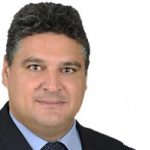Many centuries ago while studying law as an undergraduate, a particularly inspiring corporate law lecturer suggested that I might want to read a book on management theory, as well as immersing myself in case law and precedent. I still have no idea why he suggested it and I believe I was the only one in the company law class who took him up on it.
The book was by Peter Drucker. For those of you who have not encountered his work, Drucker has been hailed as the godfather of modern business theory, influencing and mentoring the likes of Jack Welch of GE and revered by the Japanese as the man who inspired the resurgence in their technology industry in the 1960s and 1970s. None of this was clear to me when I read the book, but what became clear was that the doctrine he set out was compelling and apparently completely at odds with what was, in the early 1980s, taken as orthodoxy in UK business.
Fast forwarding 20 years to 2004, when I took over as managing partner in Nicholson Graham & Jones – we later merged in January 2005 with Kirkpatrick & Lockhart, becoming its first international office and office number 11 (K&L Gates now has 47 outposts around the world) – and for no particular reason other than the fact that at the time we were facing something of a crisis (ahem!), I decided to reread Drucker’s book. His basic assertion is still pretty shocking: there is no such thing as profit. Profit is an artifice created by accountants to make the books balance. What we call profit is actually the cost of staying in business tomorrow.
Drucker’s basic assertion is still pretty shocking: there is no such things as profit. Profit is an artifice created by accountants to make the books balance.
In today’s Big Law environment with its obsession with PEP, RPL, productivity enhancement and metric-based comparison, this sort of language comes close to heresy. However, if you strip away the startling rhetoric, the message is not so controversial. It simply means that a business’s long-term viability depends upon constant reinvention through investment in innovative and differentiated client offerings. What is startling when you think about it, is how far Big Law has moved away from what I would argue is this basic truth in its focus on short-term consumption, particularly for and by its partners.
Drucker is not saying that businesses should live in sackcloth and ashes for the sake of the next generation, but he is saying that an industry that focuses in on itself and measures itself solely by its consumption is missing the fundamental reason for its existence, which is meeting client demand. To quote Drucker again ‘there is only one valid definition of a business purpose: to create a customer’. I would say this wouldn’t I?
However, Drucker’s approach can lead to increased competitiveness, market penetration and, ironically, also increase profitability. In the case of my own office, influenced by Drucker’s approach in removing P&L barriers between groups and departments and developing a multi-disciplinary approach which involves every lawyer in the office in all of our focus areas, we have increased revenues by 60% in the last five years on a largely static headcount with an RPL increase of 62% over that period.
The last five years have seen the toughest business environment that any of us have experienced. My feeling is that the next few years will be equally tough. Perhaps it is time to challenge the orthodoxy of how we define and portray ourselves as an industry, and collectively present the message, to an increasingly sceptical client market, that Big Law is less obsessed with itself and more focused on its future through investment.
Tony Griffiths is the head of London at K&L Gates.












